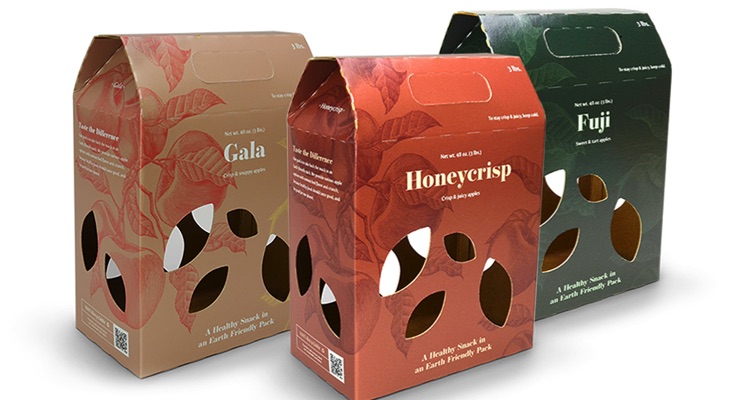
Graphic Packaging International’s ProducePack, a sustainable paperboard range of packaging designed for fresh produce applications, is proving to be an effective and user-friendly solution to preserving fruit for Michigan apple distributor BelleHarvest.
Following its successful launch earlier this year, ProducePack was introduced for BelleHarvest’s three most popular apple varieties, Fuji, Honeycrisp and Gala. Featuring an upright structure to protect the delicate apples while enhancing branding opportunities by increasing billboarding space, ProducePack is a 100 percent recyclable packaging solution. In addition, the carton’s striking design, with its convenient quick ‘grab & go’ carry handle, has been attracting attention in the produce aisle.
“We care greatly about our effect on the environment, so we are excited to lead the way in evolving our packaging in the apple category and respond to consumer demands for a paper-based alternative to plastic,” Angela Sommers, marketing director at BelleHarvest, said.
“We are therefore delighted to report that ProducePack has led to a greater than 15% reduction in apple defects while stored in refrigeration, keeping our fruit in the best condition for longer,” continued Sommers. “The packaging material and fruit held up exceptionally well in transit and refrigeration, reducing the possibility of shrinkage and packaging waste. This is an excellent achievement in such a short space of time.”
BelleHarvest’s sustainable apple packaging recently scooped one of four wins for Graphic Packaging in the Institute of Packaging Professionals' AmeriStar Awards 2021. Awarded under Saves Food–Agriculture, the winning BelleHarvest pack was a first for the fresh produce category.
“We are extremely pleased that our innovative range is producing such impressive results for BelleHarvest,” Jackie D’Ambrosio, senior manager, new product development – omnichannel at Graphic Packaging, said. “This underscores ProducePack’s viability as a commercial solution for customers who want to make a positive contribution to the environment while meeting growing demand from consumers for a sustainable, fiber-based alternative to plastic.”







